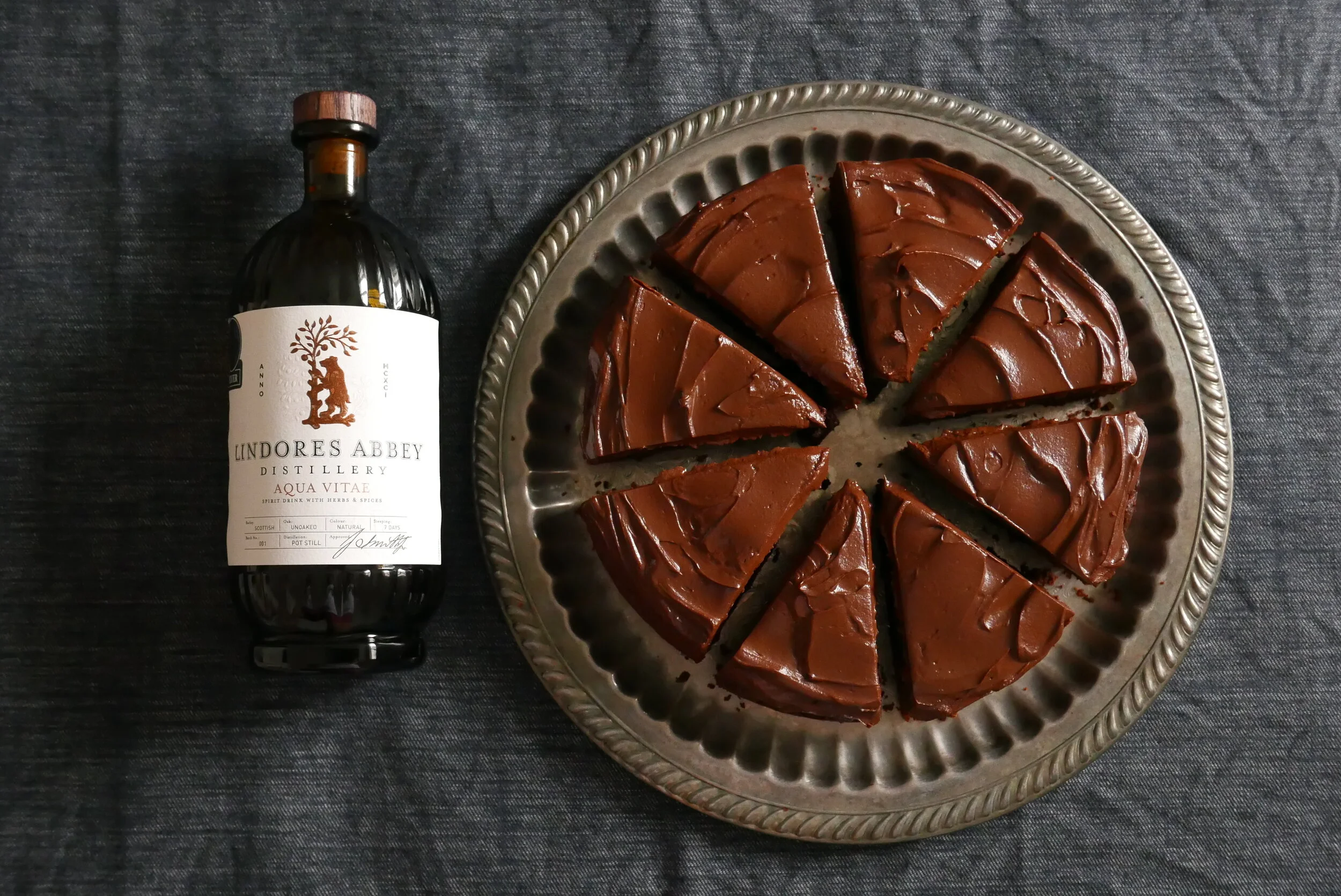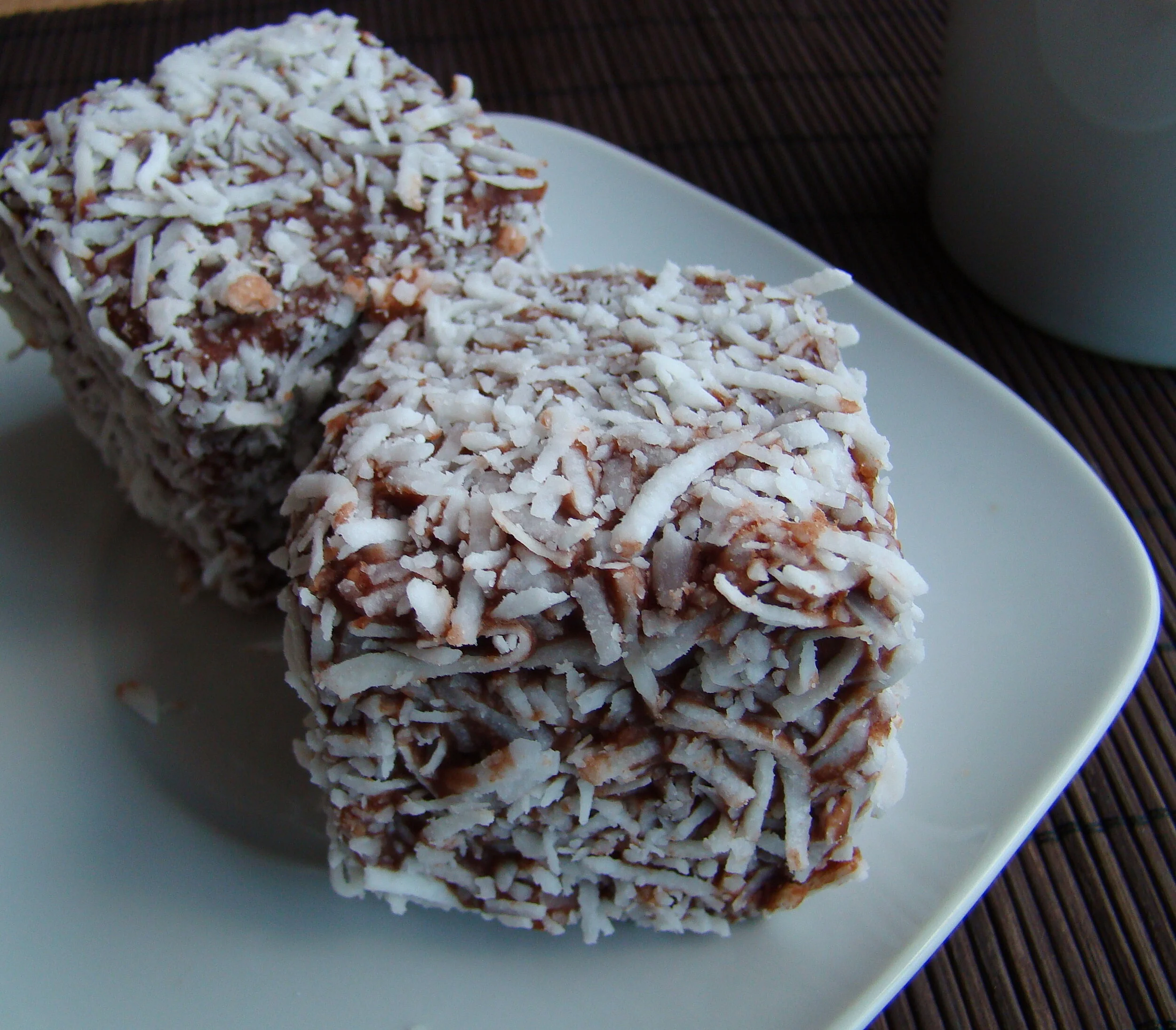explore the world through the universal language of food
Dark Chocolate & Aqua Vitae Prune Cake
The Recipe
Serves: 6-8 people
Preparation: overnight
Baking Time: 45 minutes
This lusciously indulgent cake is made with some absolutely delicious Aqua Vitae from Lindores Abbey Distillery in Fife, Scotland. If you can, get your hands on this balanced malt spirit with a myriad of balanced fruit, spices and locally grown herbs.
If you can’t do so, this recipe can be substituted with rum or even a whisky.
INGREDIENTS
Aqua Vitae Prunes
200g pitted prunes
100mls Lindores Abbey aqua vitae (if not, a dark rum, whiskey)
1 tblsp sugar
Combine all ingredients and soak for a minimum of two days until the prunes are deliciously plump and juicy.
Ingredients - Cake
200g unsalted butter
100g caster sugar
100g brown sugar
3 eggs
60g cocoa
¼ tsp sea salt
250g plain flour
1.5tsp baking powder
100g dark melted chocolate (65% or more)
Dark Chocolate Ganache
300g dark chocolate (70%), chopped into bits
300g cream
1 tbsp honey
METHOD
Heat the cream on a medium setting and melt in the chocolate and honey until combined Take off the heat and allow to cool completely.
Preheat the oven to 180 °Celsius and grease and line a round 20cm (ish) cake tin.
Strain the prunes, reserving the liquid, and roughly chop the prunes.
In an electric mixer, cream the butter and sugars until light and fluffy.
Crack the eggs in a separate bowl individually before mixing them into the creamed butter mixture until combined. At this stage, you can add the reserved liquid from the soaked prunes.
Sift the cocoa, baking powder, salt, and cocoa in a separate bowl.
Mix the melted chocolate into the wet mixture and then fold in the dry ingredients
Place the batter in the lined cake tin and bake for 35-40 minutes
When the cake is done, allow to cool slightly before turning it out onto a cooling rack to cool completely.
Dress the cooled cake with the ganache on top or just the sides, whatever you fancy
Cut into not-so-generous slices as this cake is sumptuously rich, you can always go back for a second – don’t worry, I won’t judge.
Lamingtons for Milo
The Recipe
Makes: 12 medium lamingtons
Preparation: 30 minutes
Baking Time: 20-30 minutes
Supposedly named after Lord Lamington, the governor of the northern state, Queensland in the late 1800s these little vanilla cakes rolled in chocolate and coconut have become a cake that one either loves or hates.
I don't think that there are many foods that are iconic to Australia. Sure, we have pavlova, meat pies, sausage rolls and hamburgers with egg, canned beetroot, and pineapple, amazing seafood and then we have lamingtons.
Supposedly named after Lord Lamington, the governor of the northern state, Queensland in the late 1800s these little vanilla cakes rolled in chocolate and coconut have become a cake that one either loves or hates.
I remember the lamington drives when I was in primary school. The school would order a massive amount of artificial looking and tasting blocks of stale cake squished together with stark white cream and a small slathering of jam that resembled a little bit of a strawberry flavour. We raised quite a bit of money for these drives; however, the memory of those artificial cakes left a bad taste in my mouth....
Fast forward, to Singapore, in 2012. I was a proud owner of a cafe where I served just as many Australian ex-pats as I did local Singaporeans. It was here I started making my version of lamingtons. using fresh cake, good vanilla, and quality chocolate. Baking a batch at 5am, ensured a sell-out by 10am.
Fast forward, to Mexico, in 2014. A bright young Canadian Mexican graced us with his ever-enthusiastic presence and questioned me... "Do you know how to make lamingtons?", I sure do.
INGREDIENTS
CAKE
260g all-purpose flour
2 tsp baking powder
¼ tsp salt
113g butter unsalted (room temperature)
150g caster sugar
100mls milk
2 medium eggs (50g in weight each) @ room temperature
1 tsp good vanilla extract or ½ tsp vanilla bean paste
ICING
454 g icing sugar
30g cocoa (sifted)
42g salted butter
120 mls milk (4oz)
100g desiccated coconut
METHOD
Preheat the Oven to 180’ Celsius and grease and line with baking paper a 20cm square pan.
Beat butter, vanilla & sugar together until smooth and creamy.
In a separate bowl, sift flour & baking powder.
Add eggs to the butter mixture one by one
Add 1/3 of the flour and 1/3 of the milk and mix. Continue doing this until all the ingredients are used up, ending with the flour.\
Spoon into the pan and level off with a spatula.
Bake in the preheated oven for about 20-30 minutes. When a skewer is inserted into the centre of the cake it should come out clean.
Allow the cake to cool completely then wrap it in cling film and refrigerate overnight.
Once the cake is set and nice and firm, cut it into even squares.
Over a double boiler on medium heat, mix all ingredients (except the coconut) until melted and combined
Put the coconut in a separate bowl.
Take a square of the vanilla cake and dip it into the chocolate mixture until completely covered. Next roll the square in the coconut.
Place on a cooling rack to set
*The cake can be refrigerated for up to 3 days. If not used right away it can also be frozen and then defrosted (room temperature)
Chocolate Glazed Doughnuts - and a Vanilla Milkshake
The Recipe
Makes: 16 x 60g doughnuts
Preparation: 30 minutes
Cooking Time: 10 minutes
Baroness Elizabeth Dimsdale who was the wife of Baron Thomas Dimsdale, a smallpox pioneer, compiled a recipe book in the 1800s containing a recipe by a local cook that made 'dow nuts' which were pieces of dough cut into the size of nuts, fried in pork lard.
Despite doughnuts being a modern-day American symbol of gooey, sweet goodness that can be eaten at any time of the day, the humble doughnut finds its origins not from the Dutch but from a home cook residing in Hertfordhire, England.
Baroness Elizabeth Dimsdale who was the wife of Baron Thomas Dimsdale, a smallpox pioneer, compiled a recipe book in the 1800s containing a recipe by a local cook that made 'dow nuts' which were pieces of dough cut into the size of nuts, fried in pork lard.
Before the 1800's there is also evidence that of variation of doughnuts were dabbled with, excluding eggs. The Romans ad Greeks used to fry pastry dough and drizzle it with honey or syrup and the Germans used to stuff the doughnuts with savoury ingredients at a time when sugar was scarce.
It is said that the Dutch Immigrants brought their 'oliekoeks' (oily cakes) to Manhattan (New Amsterdam) in the early 1800's. In the mid-1800's, Elizabeth Gregory, mother to a New England ship captain made fried dough for her son and crew for their long voyages. Her son claim that it was his invention of the whole inside the doughnut, but nobody really knows.
Either way, doughnuts evolved into an American staple, so much so, they were eaten by the troops in France during the first World War. Doughnuts were big in the states and mass production of these fried doughy sweets began when Adolph Levitt, a Russian refugee inveted the first doughnut machine in the 1920's.
The wholly sweet dough is an indulgent snack and breakfast.... I upped the indulgence scale by throwing in a vanilla bean milkshake... I hope you enjoy making these doughnuts as much as I did and learned a little bit of food history on the way!
INGREDIENTS
DOUGHNUTS
14g instant yeast
60mls warm water
325 mls milk (don't even think about using light milk)
2 medium eggs (they should be around 50g-55g each)
100g fine caster sugar
1/2 tsp salt
70g unsalted butter (melted)
625g plain flour
oil for deep frying
CHOCOLATE GLAZE
200g unsalted butter
40g good cocoa powder
100g icing sugar
70g milk
METHOD
In a mixing bowl, sprinkle yeast over water and allow to stand for 5 minutes
With the paddle beater attachment, add the sugar, milk, salt, eggs, and half the flour. Once the ingredients are incorporated, mix in the melted butter and the rest of the flour.
Knead the dough with dough hook or if you feel like a workout, by hand until nice and smooth.
Place in a well-oiled bowl and cover with cling film or a damp cloth. Allow the dough to double in size.Once the dough has doubled, take out all your anger and punch down the dough. Knead lightly on a well-floured surface and use a round cookie cutter about 8 cm in diameter to cut out your shapes. Dip your finger in flour and poke in the centre of the cut circle, move it around and around so a hole is formed.
Heat a good amount of oil for deep frying at 180'c/360'f. If you don't have a thermometer, throw a small piece of dough into the oil to see if it is ready. Place the dough onto a slotted spoon and carefully into the oil.
Fry the doughnuts on one side and then flip them over. They should be a nice golden colour. Take out the doughnuts and place onto a cooling rack and allow them to chill for a bit before dunking them in some chocolate glaze.
For the chocolate glaze, over a low heat, melt butter and whisk in cocoa, icing sugar and milk until smooth.
Allow to cool slightly. Dunk one side of the doughnuts into the velvety glaze, turn the right way up and place back on the cooling rack. Let the excess chocolate glaze drip down the sides and allow them to set slightly before dunking them in your very vanilla milkshake.
MILKSHAKE - serves 1!
A milkshake is a wonderful thing. It is so simple to make but you really can get it wrong by using artificially flavoured ingredients.
80g fresh full-fat milk
1/2 tsp good vanilla bean paste or extract (Use an artificial vanilla flavouring and you will regret it)
180g good vanilla ice cream
Blend together and pour into a chilled glass.









